- Clone
- UCHL1 (See other available formats)
- Regulatory Status
- RUO
- Workshop
- IV N31
- Other Names
- CD45RO
- Isotype
- Mouse IgG2a, κ
- Ave. Rating
- Submit a Review
- Product Citations
- publications
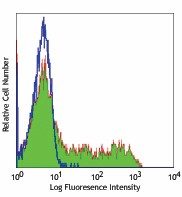
-

Human peripheral blood lymphocytes stained with purified UCHL1, followed by anti-mouse IgGs FITC -

SeqIF™ (sequential immunofluorescence) staining on COMET™ of Purified anti-CD45RO (clone UCHL1, yellow) on formalin-fixed paraffin-embedded human tonsil tissue at 2.5 µg/mL. Alexa Fluor™ Plus 647 Goat anti-Mouse IgG antibody (Lunaphore, Cat. No. DR647MS) was used as a secondary antibody. Nuclei were counterstained with DAPI (blue). Tissue underwent an all-in-one dewaxing and antigen retrieval preprocessing.
| Cat # | Size | Price | Quantity Check Availability | Save | ||
|---|---|---|---|---|---|---|
| 304202 | 100 µg | £35 | ||||
CD45RO is a 180 kD single chain membrane glycoprotein. It is a splice variant of tyrosine phosphatase CD45, lacking the A, B, and C determinants. The CD45RO isoform is expressed on activated and memory T cells, some B cell subsets, activated monocytes/macrophages, and granulocytes. CD45RO enhances both T cell receptor and B cell receptor signaling mediated activation. CD45 and its isoforms non-covalently associate with lymphocyte phosphatase-associated phosphoprotein (LPAP) on T and B lymphocytes. CD45 has been reported to be associated with several other cell surface antigens including CD1, CD2, CD3, and CD4. CD45 has also been reported to bind galectin-1 and CD22. CD45 isoform expression can change in response to cytokines.
Product DetailsProduct Details
- Verified Reactivity
- Human
- Reported Reactivity
- Chimpanzee, Cynomolgus, Common Marmoset
- Antibody Type
- Monoclonal
- Host Species
- Mouse
- Immunogen
- IL-2 dependent T cell line, CA1
- Formulation
- Phosphate-buffered solution, pH 7.2, containing 0.09% sodium azide.
- Preparation
- The antibody was purified by affinity chromatography.
- Concentration
- 0.5 mg/ml
- Storage & Handling
- The antibody solution should be stored undiluted between 2°C and 8°C.
- Application
-
FC - Quality tested
WB, IP, IHC-P - Reported in the literature, not verified in house
SB - Community verified - Recommended Usage
-
Each lot of this antibody is quality control tested by immunofluorescent staining with flow cytometric analysis. For flow cytometric staining, the suggested use of this reagent is ≤ 2.0 µg per million cells in 100 µl volume. It is recommended that the reagent be titrated for optimal performance for each application.
- Application Notes
-
The UCHL1 antibody is commonly used in combination with antibodies against CD45RA to discern memory and naïve T cells. Additional reported applications (for the relevant formats) include: immunohistochemical staining of acetone-fixed frozen tissue sections5 and formalin-fixed paraffin-embedded tissue sections4, Western blotting2, and immunoprecipitation3.
- Additional Product Notes
-
For the use of this antibody in spatial biology applications, we have partnered with Lunaphore Technologies for demonstration of our antibodies on the COMET™. The COMET™ platform is an automated, end-to-end spatial biology solution developed for rapid and flexible multiplex tissue profiling. More information on the COMET™ and a complete list of our antibodies that have been demonstrated on the COMET™ can be found here.
-
Application References
(PubMed link indicates BioLegend citation) -
- Knapp W, et al. Eds. 1989. Leucocyte Typing IV. Oxford University Press. New York. (FC)
- Ishii T, et al. 2001. P. Natl. Acad. Sci. USA 98:12138. (WB)
- Ponsford M, et al. 2001. Clin. Exp. Immunol. 124:315. (IP)
- Yamada M, et al. 1996. Stroke 27:1155. (IHC)
- Sakkas LI, et al. 1998. Clin. Diagn. Lab. Immunol. 5:430. (IHC)
- Baba N, et al. 2010. Int. Immunol. 22:237. PubMed
- Thakral D, et al. 2008. J. Immunol. 180:7431. (FC) PubMed
- Weiss L, et al. 2010. P. Natl. Acad. Sci. USA 107:10632. PubMed
- Wu YY, et al. 2007. Infect. Immun. 75:4357. PubMed
- Mozaffarian N, et al. 2008. Rheumatology 47:1335. PubMed
- Roque S, et al. 2007. J. Immunol. 178:8028. PubMed
- Yoshino N, et al. 2000. Exp. Anim. (Tokyo) 49:97. (FC)
- Smith SH, et al. 1986. Immunology 58:63. (Immunogen)
- Peterson VM, et al. 2017. Nat. Biotechnol. 35:936. (PG)
- Product Citations
-
- RRID
-
AB_314418 (BioLegend Cat. No. 304202)
Antigen Details
- Structure
- Tyrosine phosphatases, type I transmembrane, 180 kD (isoform of CD45 containing none of the A, B, or C determinants)
- Distribution
-
Activated and memory T cells, B cell subsets, monocytes, macrophages, granulocytes
- Function
- Enhances TCR and BCR signaling
- Ligand/Receptor
- CD22
- Cell Type
- B cells, Granulocytes, Macrophages, Mesenchymal Stem Cells, Monocytes, T cells, Tregs
- Biology Area
- Cell Biology, Immunology, Inhibitory Molecules, Neuroscience, Neuroscience Cell Markers, Stem Cells
- Molecular Family
- CD Molecules
- Antigen References
-
1. Thomas M. 1989. Annu. Rev. Immunol. 7:339.
2. Trowbridge I, et al. 1994. Annu. Rev. Immunol. 12:85. - Gene ID
- 5788 View all products for this Gene ID
- UniProt
- View information about CD45RO on UniProt.org
Related Pages & Pathways
Pages
Related FAQs
- If an antibody clone has been previously successfully used in IBEX in one fluorescent format, will other antibody formats work as well?
-
It’s likely that other fluorophore conjugates to the same antibody clone will also be compatible with IBEX using the same sample fixation procedure. Ultimately a directly conjugated antibody’s utility in fluorescent imaging and IBEX may be specific to the sample and microscope being used in the experiment. Some antibody clone conjugates may perform better than others due to performance differences in non-specific binding, fluorophore brightness, and other biochemical properties unique to that conjugate.
- Will antibodies my lab is already using for fluorescent or chromogenic IHC work in IBEX?
-
Fundamentally, IBEX as a technique that works much in the same way as single antibody panels or single marker IF/IHC. If you’re already successfully using an antibody clone on a sample of interest, it is likely that clone will have utility in IBEX. It is expected some optimization and testing of different antibody fluorophore conjugates will be required to find a suitable format; however, legacy microscopy techniques like chromogenic IHC on fixed or frozen tissue is an excellent place to start looking for useful antibodies.
- Are other fluorophores compatible with IBEX?
-
Over 18 fluorescent formats have been screened for use in IBEX, however, it is likely that other fluorophores are able to be rapidly bleached in IBEX. If a fluorophore format is already suitable for your imaging platform it can be tested for compatibility in IBEX.
- The same antibody works in one tissue type but not another. What is happening?
-
Differences in tissue properties may impact both the ability of an antibody to bind its target specifically and impact the ability of a specific fluorophore conjugate to overcome the background fluorescent signal in a given tissue. Secondary stains, as well as testing multiple fluorescent conjugates of the same clone, may help to troubleshoot challenging targets or tissues. Using a reference control tissue may also give confidence in the specificity of your staining.
- How can I be sure the staining I’m seeing in my tissue is real?
-
In general, best practices for validating an antibody in traditional chromogenic or fluorescent IHC are applicable to IBEX. Please reference the Nature Methods review on antibody based multiplexed imaging for resources on validating antibodies for IBEX.
Other Formats
View All CD45RO Reagents Request Custom ConjugationCustomers Also Purchased
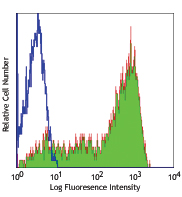
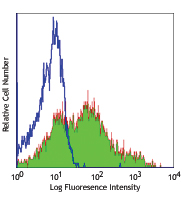
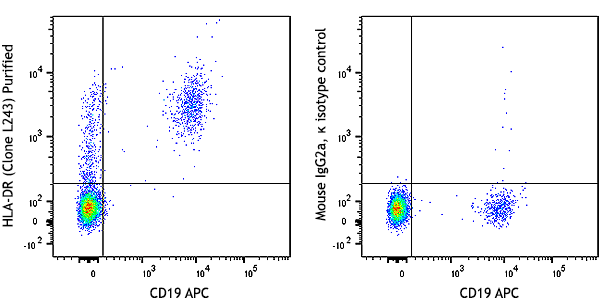
Compare Data Across All Formats
This data display is provided for general comparisons between formats.
Your actual data may vary due to variations in samples, target cells, instruments and their settings, staining conditions, and other factors.
If you need assistance with selecting the best format contact our expert technical support team.
-
APC anti-human CD45RO
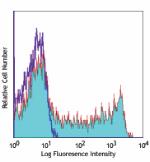
Human peripheral blood lymphocytes stained with UCHL1 APC -
FITC anti-human CD45RO
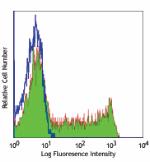
Human peripheral blood lymphocytes stained with UCHL1 FITC -
PE anti-human CD45RO
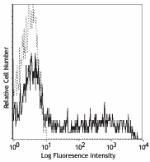
Human peripheral blood lymphocytes stained with UCHL1 PE 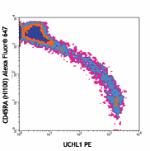
Human peripheral blood lymphocytes stained with UCHL1 PE and... -
PE/Cyanine5 anti-human CD45RO
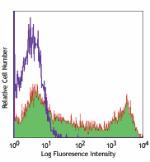
Human peripheral blood lymphocytes stained with UCHL1 PE/Cya... -
Purified anti-human CD45RO
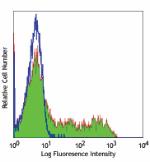
Human peripheral blood lymphocytes stained with purified UCH... 
SeqIF™ (sequential immunofluorescence) staining on COMET™ of... -
Alexa Fluor® 488 anti-human CD45RO
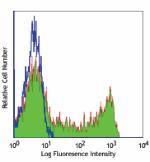
Human peripheral blood lymphocytes stained with UCHL1 Alexa ... 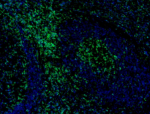
Human paraffin-embedded tonsil tissue slices were prepared w... -
Pacific Blue™ anti-human CD45RO
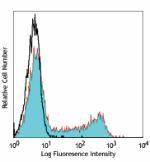
Human peripheral blood lymphocytes stained with UCHL1 Pacifi... -
Alexa Fluor® 700 anti-human CD45RO
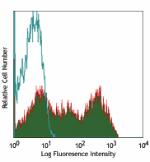
Human peripheral blood lymphocytes stained with UCHL1 Alexa ... -
Biotin anti-human CD45RO
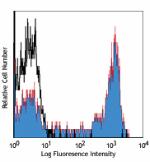
Human peripheral blood lymphocytes stained with biotinylated... -
Brilliant Violet 421™ anti-human CD45RO
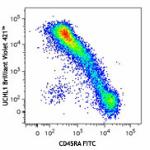
Human peripheral blood lymphocytes were stained with CD45RA ... 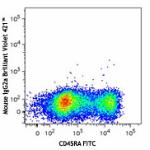
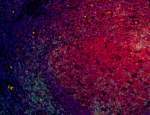
Human paraffin-embedded tonsil tissue slices were prepared w... -
PerCP/Cyanine5.5 anti-human CD45RO

Human peripheral blood lymphocytes were stained with CD45RA ... -
Brilliant Violet 570™ anti-human CD45RO
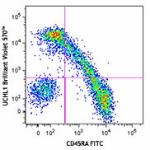
Human peripheral blood lymphocytes were stained with CD45RA ... 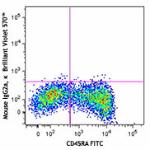
-
Brilliant Violet 605™ anti-human CD45RO
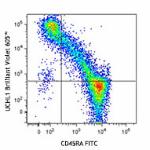
Human peripheral blood lymphocytes were stained with CD45RA ... 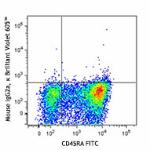
-
APC/Cyanine7 anti-human CD45RO

Human peripheral blood lymphocytes were stained with CD45RA ... -
PE/Cyanine7 anti-human CD45RO
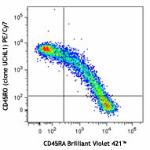
Human peripheral blood lymphocytes were stained with CD45RA ... 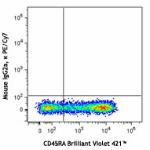
-
Brilliant Violet 650™ anti-human CD45RO
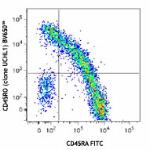
Human peripheral blood lymphocytes were stained with CD45RA ... 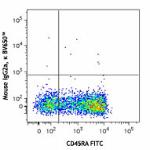
-
Brilliant Violet 711™ anti-human CD45RO
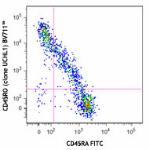
Human peripheral blood lymphocytes were stained with CD45RA ... -
Brilliant Violet 785™ anti-human CD45RO
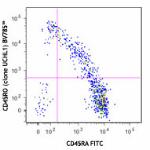
Human peripheral blood lymphocytes were stained with CD45RA ... -
Alexa Fluor® 594 anti-human CD45RO
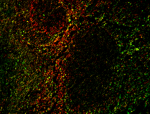
Human paraffin-embedded tonsil tissue slice was stained with... -
Purified anti-human CD45RO (Maxpar® Ready)
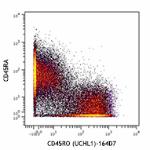
Human PBMCs stained with 153Eu-anti-CD45RA (HI100) and 164Dy... -
Brilliant Violet 510™ anti-human CD45RO
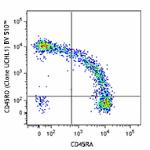
Human peripheral blood lymphocytes were stained with CD45RA ... 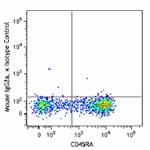
-
PE/Dazzle™ 594 anti-human CD45RO
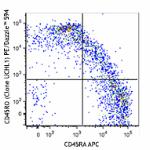
Human peripheral blood lymphocytes were stained with CD45RA ... 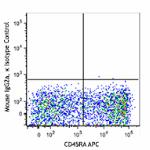
-
APC/Fire™ 750 anti-human CD45RO
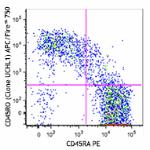
Human peripheral blood lymphocytes were stained with CD45RA ... 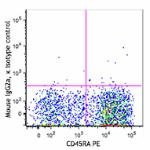
-
PerCP anti-human CD45RO
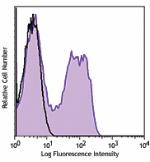
Human peripheral blood lymphocytes were stained with CD45RO ... -
APC anti-human CD45RO
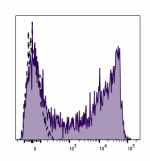
Typical results from human peripheral blood lymphocytes stai... -
TotalSeq™-A0087 anti-human CD45RO
-
TotalSeq™-B0087 anti-human CD45RO
-
TotalSeq™-C0087 anti-human CD45RO
-
Brilliant Violet 750™ anti-human CD45RO

Human peripheral blood lymphocytes were stained with CD45RA ... -
PE/Fire™ 640 anti-human CD45RO

Human peripheral blood lymphocytes were stained with CD45RA ... -
TotalSeq™-D0087 anti-human CD45RO
-
Spark Violet™ 423 anti-human CD45RO

Human peripheral blood lymphocytes were stained with anti-hu... -
GMP APC anti-human CD45RO
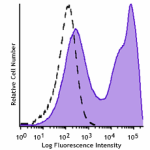
Typical results from human peripheral blood lymphocytes stai... -
PE anti-human CD45RO
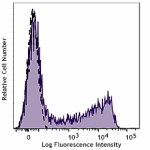
Typical results from human peripheral blood lymphocytes stai... -
TotalSeq™-Bn1369 anti-human CD45RO
-
GMP PE anti-human CD45RO
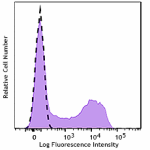
Typical results from human peripheral blood lymphocytes stai... -
Spark UV™ 387 anti-human CD45RO

Human peripheral blood cells were surface stained with anti-...
 Login / Register
Login / Register 





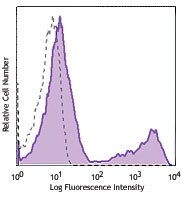



Follow Us